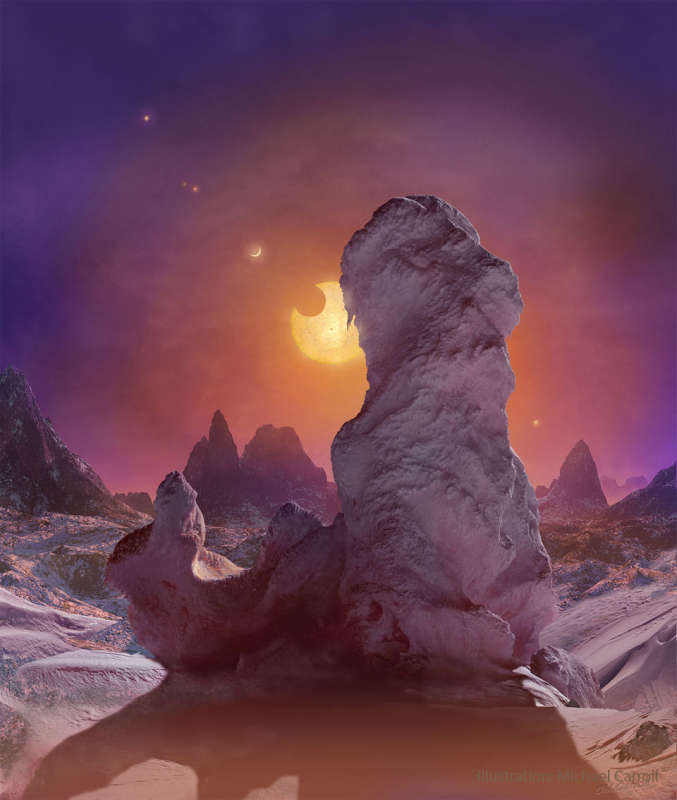Credit & Copyright: Michael Carroll
Explanation:
Seven worlds orbit the ultracool dwarf star TRAPPIST-1.
A mere 40
light-years away, many of the exoplanets were discovered in 2016
using the
Transiting Planets and Planetesimals
Small Telescope (TRAPPIST) located in the
Atlas Mountains of
Morocco,
and later confirmed with telescope including NASA's
Spitzer Space Telescope.
The
TRAPPIST-1
planets are likely all rocky and
similar in size to Earth, and so compose one of the largest
treasure
troves of terrestrial planets ever detected around
a single star.
Because they orbit very close to their faint, tiny star
they could also have regions where surface temperatures
allow for the presence
of ice or even liquid water, a key ingredient for
life.
Their
tantalizing proximity to Earth makes them
prime candidates for future
telescopic explorations of the atmospheres of
potentially habitable planets.
All seven exoplanets appear in
the featured illustration, which imagines a view from the most
distant known world of this system,
TRAPPIST-1h,
as having a rocky landscape covered in ice.
Meanwhile, in the imagined background, one of the
system's inner planets crosses in front of
the dim, orange, nearly
Jupiter-sized parent star.
Astrophysicists:
Browse 3,000+ codes in the Astrophysics Source Code Library
1999 2000 2001 2002 2003 2004 2005 2006 2007 2008 2009 2010 2011 2012 2013 2014 2015 2016 2017 2018 2019 2020 2021 2022 2023 2024 2025 |
Yanvar' Fevral' Mart Aprel' Mai Iyun' Iyul' Avgust Sentyabr' Oktyabr' Noyabr' Dekabr' |
NASA Web Site Statements, Warnings, and Disclaimers
NASA Official: Jay Norris. Specific rights apply.
A service of: LHEA at NASA / GSFC
& Michigan Tech. U.
|
Publikacii s klyuchevymi slovami:
extrasolar planet - ekzoplaneta
Publikacii so slovami: extrasolar planet - ekzoplaneta | |
Sm. takzhe:
Vse publikacii na tu zhe temu >> | |
